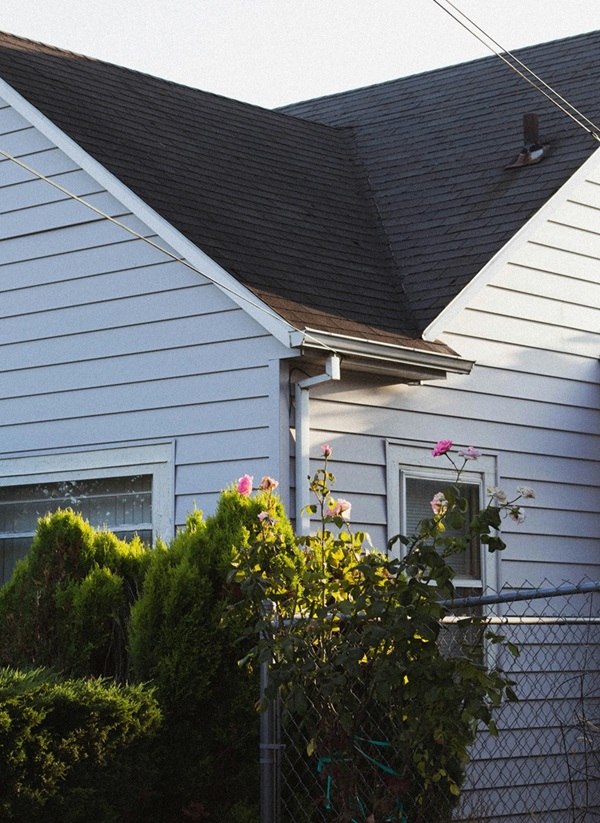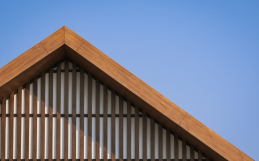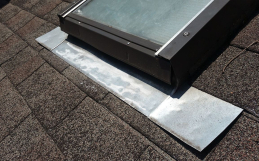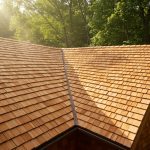When it’s time for a roof replacement, the first big question homeowners ask is:
“What type of roof should I get?”
The type of roofing material you choose has a big impact on your home’s durability, energy efficiency, curb appeal, and resale value. It’s one of the most important investments you’ll make in your home — and knowing your options helps you make a choice that lasts for decades.
If you’re new to roofing and feeling a little overwhelmed, don’t worry. We’ve put together this simple, easy-to-understand guide that covers the most common roofing materials, their pros and cons, and what you need to know to find the perfect roof for your home.
What to Consider Before Choosing a Roofing Material
Not all roofs are created equal — and not every type of roofing material works for every home. Choosing the right roofing material is about more than just picking the one that looks the best or has the longest warranty. It’s about finding a balance between performance, style, and cost that fits your specific needs and environment.
Before diving into the different types of roofing materials, it’s important to think about a few key factors:
Climate
The weather where you live plays a major role in how well your roof performs. In the Pacific Northwest, homeowners face frequent rain, high winds, and the risk of moss and algae growth. Certain materials, like metal roofs and treated asphalt shingles, are designed to handle moisture better than others.
If you live in a wet or windy climate, you’ll want a material that’s not only waterproof but also resistant to mildew, rot, and strong gusts. A poor match between roofing material and local climate can lead to early wear, leaks, and costly repairs.
Budget
Roofing is an investment, and your budget will help determine which options are realistically available to you. Asphalt roofing is typically the most budget-friendly, making it a great option for homeowners who need a reliable roof without a large upfront cost.
On the other hand, premium options like a slate roof or a clay tile roof come with much higher installation prices but offer impressive longevity. It’s important to consider both the initial investment and the long-term value — sometimes paying a little more upfront saves you money down the road in maintenance and replacement costs.
Home Style
Your roof should complement your home’s overall look and architectural design. Some materials just “fit” better with certain styles. For example, a clay tile roof pairs beautifully with Spanish, Mediterranean, or Southwestern-style homes, while wood shingles or shakes suit rustic cottages or historic houses.
Sleek, modern homes often look best with standing seam metal roofing or flat rubber roofs for clean, minimalistic lines. Matching the roofing material to the character of your home not only improves curb appeal but can also boost property value.
Roof Slope
The angle or steepness of your roof — called the slope — will also influence your material options. Some materials, like asphalt shingles, metal roofs, and slate tiles, are ideal for slope roofing with moderate to steep pitches, where water can easily run off.
If your home has a low-slope or even flat roof, you’ll need to consider materials that are specially designed for those conditions, like a rubber roof (EPDM). Using the wrong material for your roof’s slope can cause drainage problems, leading to leaks and early failure.
Lifespan Expectations
Not every homeowner plans to stay in their current home forever. If you expect to move within a few years, you may prefer a roofing option that’s affordable and provides good short-term protection. If you’re planning to stay in your home long-term, investing in a material with a longer lifespan makes sense.
Some roofs, like asphalt shingles or wood shakes, offer about 30 years of protection with good care. Other materials, like standing seam metal roofing or a clay tile roof, can last 50 years or even longer with minimal maintenance. Your expected timeline can help you choose a roofing material that makes the most sense financially.
Common Types of Roofing Materials
 Let’s take a closer look at the common roofing materials available for today’s homes. We’ll break down each material’s advantages, disadvantages, and typical lifespan.
Let’s take a closer look at the common roofing materials available for today’s homes. We’ll break down each material’s advantages, disadvantages, and typical lifespan.
Asphalt Roofing / Composite Shingle Roof
Asphalt and composite shingles are by far the most popular roofing material for residential homes in the United States. They’re affordable, lightweight, and easy to install.
- Pros: Budget-friendly, wide variety of colors and styles, easy to repair.
- Cons: Shorter lifespan compared to premium materials, can be damaged by high winds.
- Lifespan: About 20 to 30 years with good maintenance.
If you’re looking for a cost-effective option that looks great and protects well, a shingle roof made from asphalt is a great choice.
Metal Roofs / Standing Seam Metal Roofing
Metal roofs have exploded in popularity, especially standing seam metal roofing, which offers sleek lines and exceptional durability.
- Pros: Extremely durable, resistant to fire, mold, and insects, energy-efficient, recyclable.
- Cons: Higher upfront cost, can be noisier during heavy rain without proper insulation.
- Lifespan: 50 years or more with minimal maintenance.
Metal roofs are an excellent investment if you’re looking for long-term performance and a modern look.
Slate Roof / Slate Tiles
Slate roofs are some of the most beautiful and longest-lasting roofing systems available, made from natural stone.
- Pros: Extremely long-lasting, highly resistant to fire and water damage, stunning appearance.
- Cons: Very heavy, expensive, requires skilled installation to avoid cracking.
- Lifespan: 75+ years.
Slate tiles are perfect if you want a luxurious, old-world look — and if your home’s structure can support the extra weight.
Wood Shingles
Wood shingles or wood shake roofs offer a warm, rustic charm that’s hard to replicate with manufactured products.
- Pros: Naturally beautiful, excellent insulation properties, environmentally friendly if sustainably sourced.
- Cons: Requires more maintenance, vulnerable to fire unless specially treated, susceptible to insect infestations.
- Lifespan: About 30 years with proper care.
Homeowners who love the natural aesthetic often choose cedar wood shingles, especially for cottage or historic-style homes.
Clay Tile Roof / Roof Tiles
A clay tile roof instantly gives your home a classic Mediterranean, Spanish, or Southwestern look.
- Pros: Highly durable, fire-resistant, excellent in hot climates.
- Cons: Very heavy, brittle under impact (like falling branches), costly.
- Lifespan: 50 years or more.
Roof tiles made from clay are ideal for homes that can structurally support their weight and for homeowners looking for unmatched curb appeal.
Concrete Tile Roof
Concrete tile roofs offer many of the same benefits as clay, but at a lower cost.
- Pros: Affordable alternative to clay, very durable, resistant to fire and insects.
- Cons: Still heavy compared to asphalt, may require extra framing support.
- Lifespan: 40–50 years.
Concrete tiles mimic the look of stone or traditional tiles without the same high price tag.
Green Roof
Quite uncommon, a green roof is an environmentally friendly system where plants are grown over a waterproof membrane.
- Pros: Reduces energy costs, manages stormwater runoff, improves air quality.
- Cons: Higher installation costs, requires specialized maintenance.
- Lifespan: Varies greatly depending on design and upkeep.
Green roofs are gaining popularity in urban areas and for eco-conscious homeowners looking for a truly sustainable solution.
Rubber Roof
Rubber roofs (EPDM) are often used for flat or low-slope homes and buildings.
- Pros: Lightweight, durable, excellent waterproofing properties.
- Cons: Not the most stylish option, mostly used in specific low-slope applications.
- Lifespan: 20–30 years.
A rubber roof is an excellent choice for homes with flat or nearly flat roof designs needing strong protection from water.
How Long Do Different Roofing Materials Last?
Here’s a quick breakdown of roofing material life expectancies:
| Material | Lifespan Estimate |
|---|---|
| Asphalt Roofing | 20–30 years |
| Metal Roofs | 40–50+ years |
| Slate Tiles | 75–100+ years |
| Wood Shingles | Up to 30 years |
| Clay Tile Roof | 50+ years |
| Concrete Tile Roof | 40–50 years |
| Rubber Roof (EPDM) | 20–30 years |
| Green Roof | Highly variable |
Proper installation and maintenance play a huge role in whether your roof reaches its maximum lifespan.
Signs You Might Need a Roof Replacement
Even the best roofs eventually wear out. Watch for these warning signs:
- Missing, cracked, or curling shingles
- Leaks or water stains on ceilings
- Sagging roof areas
- Moss or mold growth
- Excessive granules in gutters (from asphalt shingles)
Worn, broken, or missing roof tiles
If you notice any of these issues, it might be time to consider a professional roof replacement.
Which Roofing Material Is Right for Your Home?
Choosing the right roofing material depends on what matters most to you: cost, style, durability, or environmental impact.
- If you want affordability, asphalt roofing may be the best fit.
- If you value longevity and modern style, standing seam metal roofing could be perfect.
- If you’re aiming for timeless beauty, nothing beats slate tiles or a clay tile roof.
The best way to find the right fit? Talk to an experienced professional like Warner Roofing who can guide you based on your home’s needs and your personal preferences.
Frequently Asked Questions
1. How much does a new roof cost?
The cost varies widely based on material choice, roof size, and local labor rates. Asphalt shingles are the most affordable, while slate roofs are among the most expensive.
2. Is metal roofing better than asphalt?
Metal roofs offer superior durability, energy efficiency, and longevity compared to asphalt roofing, but they come with a higher upfront price.
3. Can you install a green roof on any home?
Not all homes are suited for green roofs. They require a strong support structure and specialized waterproofing systems. Always consult a roofing expert before moving forward.
4. What’s the difference between slate tiles and slate shingles?
The terms are often used interchangeably, but technically, slate tiles refer to thicker pieces of natural stone, while shingles typically refer to thinner or manufactured versions.
5. How long does a roof replacement usually take?
Most residential roof replacement projects take 1–3 days, depending on the material and weather conditions.
Contact Warner Roofing Today
Ready to find the perfect roof for your home? Whether you’re leaning toward metal roofs, asphalt shingles, or dreaming of a luxurious slate roof, Warner Roofing & Construction is here to help.
Our team brings decades of experience, expert craftsmanship, and a commitment to quality that stands the test of time. Contact Warner Roofing today for an estimate and let’s build a roof that protects your home beautifully for decades to come.







